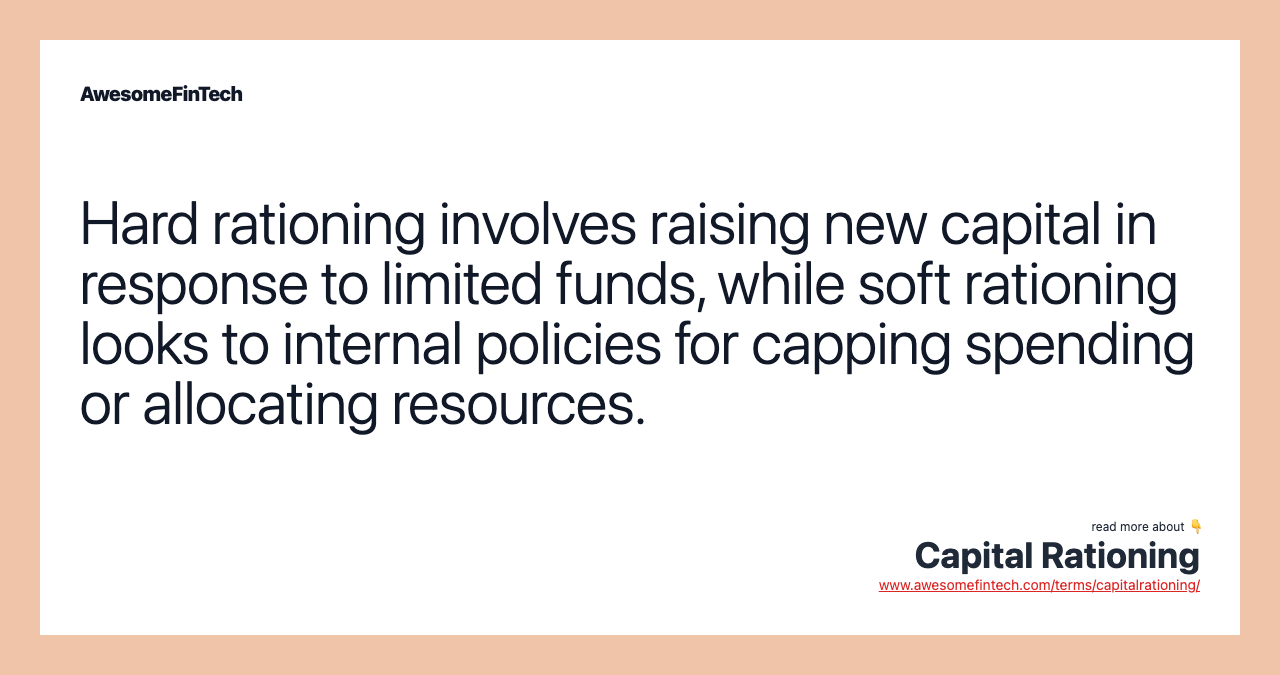
Policies such as regulatory limitations on the amount of capital a bank may lend at a time can force hard rationing on businesses. The capital available could be restricted by both internal and external conditions. A tumultuous economic climate or industry-wide volatility could limit a firm’s access to external financing, making it necessary to ration available internal funds judiciously.
Working Capital Management: Factors Affecting, Importance, Requirement, Strategies, Managing
It is also important because it focuses on the quality of the projects that companies take rather than quantity. This concept pushes the firms into considering returns beyond the financial spectrum. A successful capital rationing strategy can lead to an increase in brand value, customer trust, and reputation – all vital aspects considering today’s conscientious consumer base. Additionally, sustainable projects foster resilience by reducing dependency on limited resources or minimising exposure to carbon-based risk. Over-investment occurs when resources are channeled towards a project or investment beyond the point of maximum efficiency.
How to Check the Allotment Status of Plaza Wires Limited IPO?
Divisible projects refer to the projects that a company can accept or reject partly. With divisible projects, companies must first calculate the profitability index and the net present value of the project. Then they must rank different divisible projects based on the calculation and select the best option accordingly. When using capital rationing, companies will come across several projects that are feasible.
Soft Rationing

For example, they can use capital budgeting for accept-reject decisions and mutually exclusive projects. Among these decisions, companies may also make capital rationing decisions. Companies have to make different decisions regarding their operations during their lifetime. Some of these decisions may relate to the projects that they should undertake, while some may relate to strategies and operations.
How to sell shares of unlisted companies?
The main reasons why a firm might opt for capital rationing can be categorized primarily as tied to limited resources and the pursuit of specific investment return targets. Capital rationing refers to the strategy implemented by companies when they decide to put constraints on budgeting expenditures for new projects or initiatives. It involves prioritizing and allocating available funds towards the most profitable and valuable investments, often due to limitation of available capital. With capital rationing projects, not only is their return important, but the duration is also crucial. Therefore, companies also consider the time it takes for projects to return the expected results. It is because the longer the resources of a company are tied in a project, the more opportunities it will miss with other projects.
- Therefore, companies also consider the time it takes for projects to return the expected results.
- In communist countries, by contrast, rationing was in many cases a permanent or semi-permanent feature of daily life.
- Capital budgeting is the process of evaluating different projects and making decisions regarding them.
The process also focuses more on the timing of returns rather than maximization of wealth. The opportunity cost of capital is the additional return on investment that a business or investor foregoes by electing to invest in a certain project instead of investing in a more profitable avenue. Since the theory suggests the adoption of only the most profitable projects, it can also result in higher-than-needed capital concentration on only one project or investment.
If the reality were this simple, rationing would be both counterproductive—because it creates shortages—and unnecessary since the market will act to stabilize itself. Rationing provides governments with a way to constrain demand, regulate supply, and cap prices, but it does not totally neutralize the laws of supply and demand. These allow people to trade rationed goods they may not want for ones they do. So, hard rationing arises because of market imperfections and because of limitations created by external parties. Once all aspects are considered, a company can make decisions regarding which projects are feasible.
In this context, a firm may decide to implement capital rationing by seeking new investment opportunities with a higher net present value as well as setting a higher ceiling on the cost of capital. In doing so, the firm can assume control over its resources and undertake fewer projects or projects with a higher expected return on investment. Soft rationing, on the other hand, is mainly self-imposed by a firm rather than enforced by external factors.
The cost of borrowing is often expressed in terms of an effective annual interest rate, which takes into account both the simple interest rate that a lender charges and the effect of compounding. A company’s cost of borrowing is based in part on its likelihood of defaulting on the debt. If an organization has limited capital, it may have to concentrate on its core competencies instead of branching out. Compared to private organizations, more diplomatic and consultative methods are involved rather than a purely rational decision based on economic returns. Efficient resource allocation is essential for any company for various reasons, as mentioned below. YCL is engaged in the business of construction of buildings for residential and commercial purposes.
While capital rationing can be a useful tool for companies to manage their financial resources effectively, it is not without its drawbacks and challenges. A significant downside tax deductions for officers of a nonprofit organization of capital rationing is the potential for missed investment opportunities. A company may have to reject some potentially profitable projects due to limited funds.
This decision helped optimize business operations and improve returns on capital. In contrast, tech startups or creative firms typically require less capital for physical assets. However, these industries often face a high degree of uncertainty and fluctuating revenues, particularly in their early stages. Capital is frequently rationed between product development, talent recruitment, market research, and consumer acquisition campaigns. With limited resources, startups must be particularly strategic in determining where their capital will generate the most value and growth.



